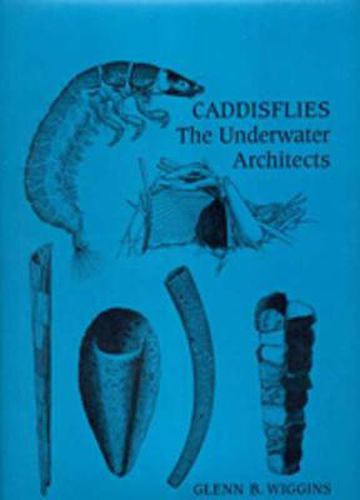Readings Newsletter
Become a Readings Member to make your shopping experience even easier.
Sign in or sign up for free!
You’re not far away from qualifying for FREE standard shipping within Australia
You’ve qualified for FREE standard shipping within Australia
The cart is loading…






Caddisflies constitute the insect order Trichoptera in which some 10,000 species are known in the world, including about 1400 in North America. Fossil evidence shows that caddisflies originated in the Triassic period, 200-250 million years ago. They are important links in the movement of energy and nutrients through freshwater ecosystems due largely to the extraordinary diversification in their larval architecture, which includes portable and stationary shelters, silken filter nets, and osmotically semipermeable cocoons. Glenn Wiggins’s Caddisflies is the foremost comprehensive reference source about these insects and is concerned with behavioural ecology, evolutionary history, biogeography, and biological diversity. Wiggins outlines fundamental concepts of aquatic ecology, illuminating the ways in which caddisflies help to make fresh waters work. Essential features of morphology, biology, and distribution are outlined for the twenty-six. North American families of caddisflies and illustrated diagnostic keys are provided for larvae, pupae, and adults. The author also brings together information on caddisflies from widely scattered sources and provides comprehensive coverage of the scientific literature.
$9.00 standard shipping within Australia
FREE standard shipping within Australia for orders over $100.00
Express & International shipping calculated at checkout
Caddisflies constitute the insect order Trichoptera in which some 10,000 species are known in the world, including about 1400 in North America. Fossil evidence shows that caddisflies originated in the Triassic period, 200-250 million years ago. They are important links in the movement of energy and nutrients through freshwater ecosystems due largely to the extraordinary diversification in their larval architecture, which includes portable and stationary shelters, silken filter nets, and osmotically semipermeable cocoons. Glenn Wiggins’s Caddisflies is the foremost comprehensive reference source about these insects and is concerned with behavioural ecology, evolutionary history, biogeography, and biological diversity. Wiggins outlines fundamental concepts of aquatic ecology, illuminating the ways in which caddisflies help to make fresh waters work. Essential features of morphology, biology, and distribution are outlined for the twenty-six. North American families of caddisflies and illustrated diagnostic keys are provided for larvae, pupae, and adults. The author also brings together information on caddisflies from widely scattered sources and provides comprehensive coverage of the scientific literature.